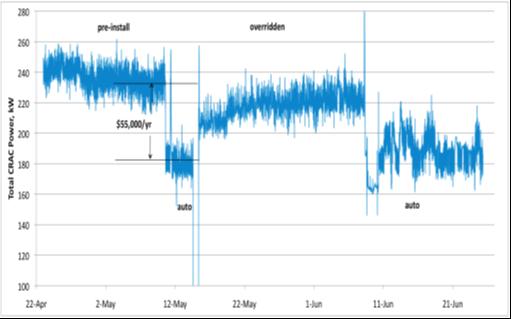There is a saying in the MEP consulting business: “no one ever gets sued for oversizing.” That fear-driven mentality also affects the operation of mechanical systems in data centers, which accounts for why data centers are over-cooled at great expense. But few facility managers know by how much. The fact is that it has been easier – and to date –safer to over-cool a data center as the importance of the data it contains has increased and with that importance, the pressure to protect it.
Last year that changed. With new technology, facility managers know exactly how much cooling is required in a data center, at any given time. And, perhaps more importantly, technology can provide warning – and reaction time – in the rare instances when temperatures increase unexpectedly. With this technology, data center cooling can now be “dynamically right-sized.” The risk of dynamic management can be made lower than manual operation, which is prone to human error.
In our own nod to the advantages of this technology, we re-named the company I co-founded in 2004, from Federspiel Corporation to Vigilent Corporation. As our technology increased in sophistication, we felt that our new name, denoting vigilance and intelligent oversight of facility heating and cooling operations, was more reflective of the new reality in data center cooling management. Last year, through smart, automated management of data center energy consumption, Vigilent reduced carbon emissions and energy consumption of cooling systems by 30-40%. These savings will continue year after year, benefiting not only those companies’ bottom line, but also their corporate sustainability objectives. These savings have been accomplished while maintaining the integrity and desired temperatures of data centers of all sizes and configurations in North America, Canada and Japan.
I’m proud of what we have achieved last year. And I’m proud of those companies who have stepped up to embrace technology that can replace fear with certainty, and waste with efficiency.



